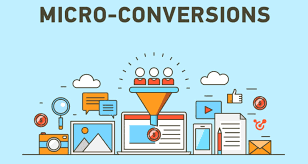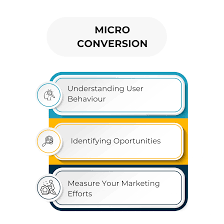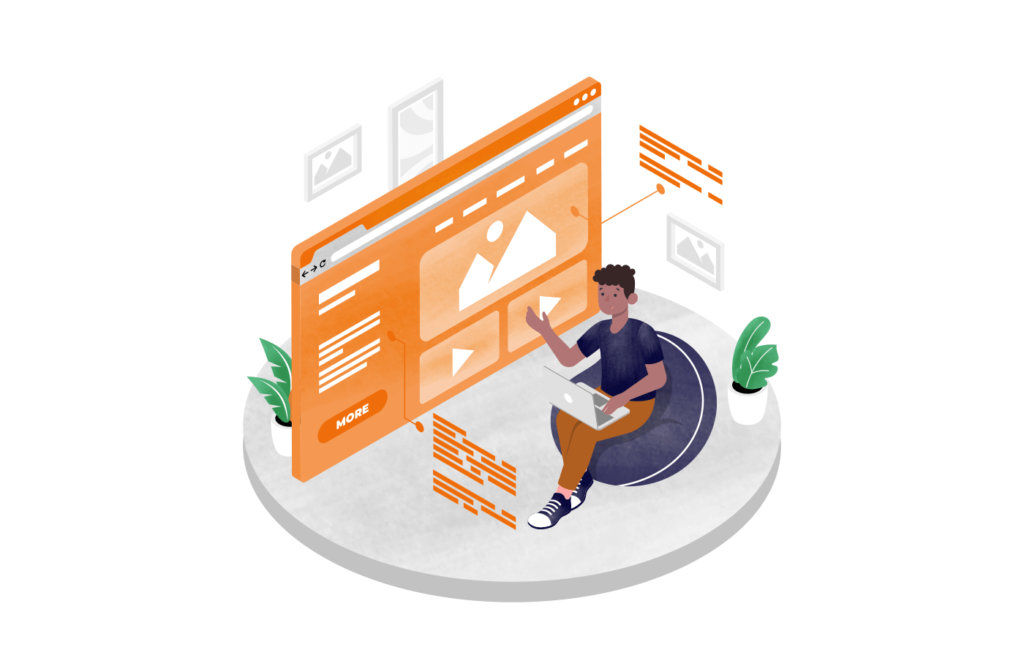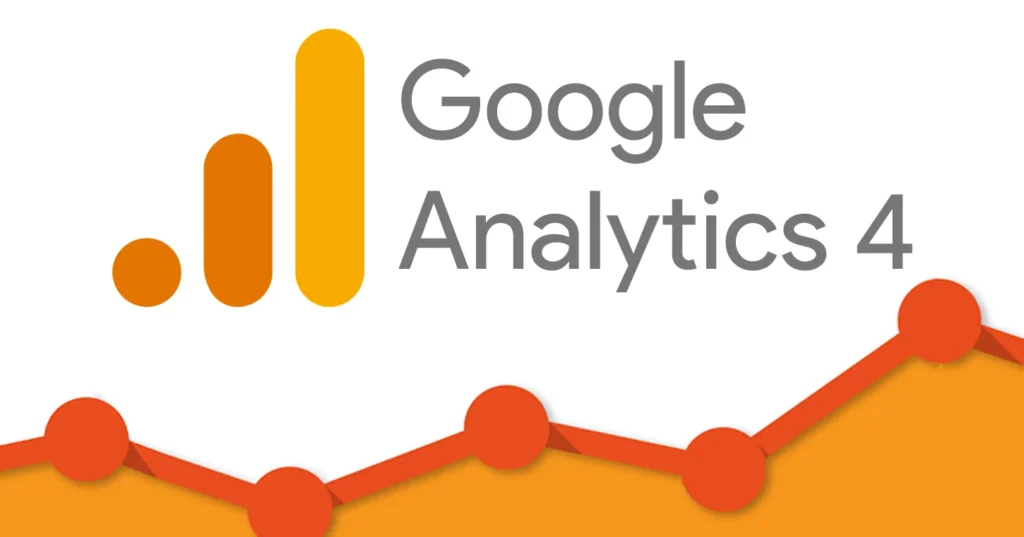In the fast-paced world of ecommerce, achieving significant growth often hinges on more than just final sales. While completing a purchase is the ultimate goal, the journey leading customers to that point is filled with smaller, meaningful actions known as micro-conversions. These subtle yet powerful steps — from newsletter sign-ups and product page views to adding items to a wishlist or cart — provide valuable insights into customer behavior and build momentum toward a sale. Unlocking the potential of micro-conversions can transform your ecommerce strategy, helping you nurture leads, improve user experience, and boost overall revenue. In this blog post, we’ll explore how focusing on these incremental milestones can drive sustained growth and success for your online store.
1. Understanding Micro-Conversions: Definition and Importance
When it comes to driving ecommerce success, understanding micro-conversions is essential. Unlike macro-conversions, which typically refer to the primary goals such as completing a purchase or signing up for a subscription, micro-conversions are the smaller, incremental actions that users take on their journey toward those larger goals. These can include activities like adding a product to a wishlist, signing up for a newsletter, downloading a product guide, or even spending a certain amount of time browsing a category page. While these actions may not directly translate to immediate sales, they are crucial indicators of user engagement and intent. By tracking and optimizing for micro-conversions, ecommerce businesses gain valuable insights into customer behavior, identify potential bottlenecks in the sales funnel, and create targeted strategies that nurture prospects through each stage of their buying journey. Ultimately, paying close attention to micro-conversions allows brands to build stronger relationships with customers, increase overall conversion rates, and unlock sustainable growth.
2. Common Types of Micro-Conversions in Ecommerce
Micro-conversions are the small, meaningful actions that users take on your ecommerce website, which indicate engagement and move them closer to making a purchase. While the ultimate goal is often the final sale, these micro-conversions serve as critical stepping stones in the customer journey. Common types of micro-conversions in ecommerce include newsletter sign-ups, where visitors subscribe to receive updates and promotions; adding products to a wishlist or shopping cart, signaling purchase intent; account creation or login, which helps personalize the shopping experience; and product reviews or ratings, reflecting customer interaction and trust-building. Other micro-conversions might involve clicking on promotional banners, using product filters, or engaging with live chat support. By tracking and optimizing these micro-conversions, ecommerce businesses can better understand customer behavior, identify potential roadblocks, and implement strategies that ultimately enhance conversion rates and drive sustained growth.
3. How to Track and Measure Micro-Conversions Effectively
Tracking and measuring micro-conversions effectively is essential for gaining deeper insights into customer behavior and optimizing your ecommerce strategy. Unlike macro-conversions, which represent final actions like completed purchases, micro-conversions capture the smaller, yet critical, steps customers take on their journey—such as signing up for a newsletter, adding items to a wishlist, or viewing a product video. To track these actions accurately, start by defining clear micro-conversion goals that align with your overall business objectives. Utilize analytics tools like Google Analytics, Mixpanel, or Kissmetrics, which allow you to set up event tracking and custom funnels tailored to these specific interactions. Implement event tags through platforms like Google Tag Manager to monitor user engagement without disrupting site performance. Additionally, segment your audience based on behaviors to identify which micro-conversions correlate strongly with increased sales or higher customer lifetime value. Regularly analyze this data to uncover trends, optimize user experience, and prioritize marketing efforts that drive meaningful engagement. By systematically tracking micro-conversions, you not only enhance your understanding of customer journeys but also unlock powerful opportunities to boost your ecommerce growth.
4. Strategies to Optimize Micro-Conversions for Increased Sales
Optimizing micro-conversions is a powerful strategy to unlock sustained growth and boost overall sales in your ecommerce business. Unlike primary conversions such as completed purchases, micro-conversions represent smaller, yet significant steps customers take on their journey, such as signing up for newsletters, adding items to their cart, or engaging with product videos. To effectively optimize these micro-conversions, start by analyzing your customer’s behavior through tools like heatmaps and funnel tracking to identify where drop-offs occur. Streamline your website’s user experience by ensuring fast load times, clear calls-to-action, and intuitive navigation that guide visitors effortlessly toward these key actions. Personalization also plays a vital role; tailor recommendations and offers based on browsing history to encourage engagement. Additionally, implement A/B testing on elements like button placements, copy, and visuals to discover what resonates best with your audience. By nurturing these micro-conversions, you not only cultivate stronger customer relationships but also pave the way for increased primary conversions, ultimately driving higher revenue and long-term ecommerce success.
5. Implementing Micro-Conversions to Enhance Customer Experience
Implementing micro-conversions is a powerful strategy to enhance the customer experience and drive ecommerce success. Unlike primary conversions, such as completing a purchase, micro-conversions focus on smaller, meaningful actions that indicate a customer’s engagement and intent. These can include signing up for a newsletter, adding a product to a wishlist, downloading a product guide, or even spending a certain amount of time browsing specific categories. By tracking and optimizing these micro-conversions, ecommerce businesses gain valuable insights into customer behavior, enabling them to tailor personalized marketing efforts and streamline the shopping journey. For example, encouraging visitors to create an account early in the process not only builds a stronger relationship but also simplifies future purchases, reducing friction at checkout. Highlighting recommendations based on browsing history or offering timely promotions after a product is added to the cart can further nurture customer interest and confidence. Ultimately, focusing on micro-conversions helps transform casual visitors into loyal customers by creating a more engaging, intuitive, and satisfying shopping experience that gradually leads to higher sales and long-term growth.
6. Case Studies: Ecommerce Brands Successfully Using Micro-Conversions
When it comes to driving ecommerce success, several brands have harnessed the power of micro-conversions to unlock significant growth. Take, for example, the popular skincare brand Glossier. By focusing on micro-conversions such as newsletter sign-ups, adding products to wishlists, and engaging with product reviews, Glossier has been able to guide customers steadily along the purchase journey. These smaller actions provide valuable data and opportunities for personalized marketing, ultimately boosting overall sales and customer loyalty.
Another standout case is the online fashion retailer ASOS. They implemented micro-conversion tracking by encouraging users to filter products, use size guides, and create personalized style profiles. These interactions not only improve the shopping experience but also help ASOS tailor recommendations and promotions effectively. As a result, the brand saw increased engagement rates and higher conversion percentages.
Similarly, the home goods ecommerce site Wayfair successfully integrated micro-conversions by prompting visitors to save favorite items, sign up for price alerts, and share products on social media. Each of these micro-actions nurtures deeper customer involvement and builds trust over time, making it easier for shoppers to move from browsing to purchasing.
These case studies highlight how focusing on micro-conversions enables ecommerce brands to create more meaningful interactions with their audience. By breaking down the customer journey into smaller, trackable steps, businesses can optimize their marketing strategies, personalize communications, and ultimately drive greater revenue growth.
7. Connecting Micro-Conversions to the Customer Journey
Understanding how micro-conversions fit into the broader customer journey is essential for unlocking sustained ecommerce growth. Micro-conversions are the smaller, incremental actions that users take on your website—such as signing up for a newsletter, adding a product to the wishlist, or engaging with a live chat feature. While these actions may not immediately result in a sale, they play a crucial role in guiding potential customers through the various stages of their decision-making process. By tracking and optimizing for these micro-conversions, businesses can nurture leads, build trust, and create personalized experiences that encourage users to move closer to completing a purchase. Essentially, micro-conversions act as valuable touchpoints that help marketers understand where customers are in their journey, enabling targeted interventions that drive higher engagement and ultimately, increase macro-conversions and overall ecommerce success.
8. Using Micro-Conversion Insights to Inform A/B Testing and CRO Strategies
One of the most powerful ways to leverage micro-conversion data is by using the insights gained to inform your A/B testing and overall Conversion Rate Optimization (CRO) strategies. Micro-conversions—such as newsletter sign-ups, adding items to a wishlist, or engaging with product videos—serve as valuable indicators of user intent and behavior. By closely monitoring these smaller actions, you can identify which elements of your ecommerce site are resonating with visitors and which may be causing friction. For example, if you notice a high drop-off rate after users add products to their cart but before checkout, it signals a critical area to test. Using this insight, you can design A/B tests that tweak the checkout flow, adjust call-to-action buttons, or simplify form fields to enhance the user experience and encourage completion of the final purchase. Moreover, tracking micro-conversions allows you to segment your audience based on their interaction patterns, enabling personalized CRO tactics tailored to different user groups. Ultimately, integrating micro-conversion insights into your testing and optimization framework empowers you to make data-driven decisions, reduce guesswork, and steadily improve your ecommerce site’s performance and profitability.

If you need help with your website, contact us for a FREE CRO Audit





